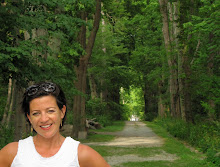
As you can see from the photo above, Cibotium can reach heights up to 8 meters. I encountered this forest - the upper canopy consisting of ohi'a and the understory of hapu'u - while walking to the Thurston Lava Tube in the park. The scale of these beautiful plants is awesome, in the truest sense of the word.

The fronds have a pure, clear green color, with small leaflets. The plant can be propagated by spores - the ones on the youngest fronds are usually most fertile.

The fiddleheads are actually the size of real fiddle or violin heads. Much like other ferns, frying or boiling the heads is part of the local cuisine.

The plants' trunk can be edible as well, but is not very tasty. I read on one site that the trunk is considered "famine food."

In addition to the edible parts of the plant, the shaggy base of the trunk - or the pulu - has been used as a soft filling for pillows and mattresses. This use reached a peak in the mid 19th century and large swaths of tree fern forests were almost irreparably degraded. Much like I mentioned Monday in regards to Metrosideros, these forests are now more carefully managed.

3 comments:
*hugs planet for having such endless wonders*
What type of weather suits this kind of fern? Will it do well in the tropics?
love the blog. thanks for this post edmonton furnace cleaning
Post a Comment